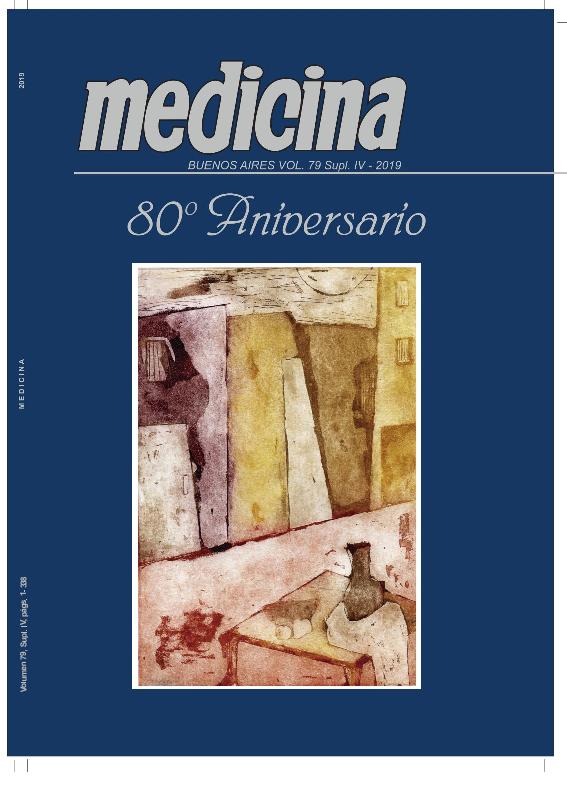Evento
Estrogen receptor and endothelial dysfunction
Valle, María Ivone; Rauschemberger, María Belén ; Espeche, Walter; Salazar, M.; Plunkett, Ricardo; Massheimer, Virginia Laura
; Espeche, Walter; Salazar, M.; Plunkett, Ricardo; Massheimer, Virginia Laura
 ; Espeche, Walter; Salazar, M.; Plunkett, Ricardo; Massheimer, Virginia Laura
; Espeche, Walter; Salazar, M.; Plunkett, Ricardo; Massheimer, Virginia Laura
Tipo del evento:
Reunión
Nombre del evento:
LXIV Reunión Anual de la Sociedad Argentina de Investigación Clínica (SAIC); LI Reunión Anual de la Asociación Argentina de Farmacología Experimental (SAFE); XXI Reunión Anual de la Sociedad Argentina de Biología (SAB); XXXI Reunión Anual de la Sociedad Argentina de Protozoología (SAP) y IX Reunión Anual de la Asociación Argentina de Nanomedicinas (NANOMED-ar)
Fecha del evento:
13/11/2019
Institución Organizadora:
Sociedad Argentina de Investigación Clínica;
Asociación Argentina de Farmacología Experimenta;
Sociedad Argentina de Biología;
Sociedad Argentina de Protozoología;
Asociación Argentina de Nanomedicinas;
Título de la revista:
Medicina (Buenos Aires)
Editorial:
Fundacion Revista Medicina
ISSN:
0025-7680
e-ISSN:
1669-9106
Idioma:
Español
Clasificación temática:
Resumen
Estrogen receptor (ER) plays key role on vascular homeostasis. Alterations of ER signaling could conduct to vascular dysfunction, impairment of angiogenesis and platelet aggregation and activation. Preeclampsia (PE) is a pregnancy disease that exhibits these features. We have previously reported that the ER activation by estrone (E1), second natural estrogen, stimulates vasodilators synthesis (NO and PGI2) and inhibits platelet aggregation. This work presents basic (1) and clinical (2) results about the association of ER and vascular dysfunction. 1) Endothelial cells (EC) were incubated with E1 10 nM for 24 h. (2) We tested the existence of association between polymorphisms of ESR1 with PE in a high-risk pregnant women population. Polymorphic variants were studied by RFLP-PCR, employing PvuII and XbaI and resolved by electrophoresis in agarose gels. The in vitro treatment of EC with E1 shows that the hormone stimulated EC growth (91% a/C, p<0.001) and VEGF synthesis. ICI 182780 (ER antagonist), suppressed E1 action. In pregnancy women, the frequencies determined by PvuII was 29% 1(C/T); 59% 2(T/T) and 12% 3(C/C). When XbaI was used the distribution was 35.3% A(A/G); 2% B(A/A) and 62.7% C(G/G). The main haplotype determined was 2C. In contrast, in young women without PE risk the main was 1A.When plasmatic levels of NO were measured, PE pregnant women exhibits a significant reduction in the vasoactive production respect to the whole pregnant population (0.150.024 vs 0.290.040 mM NO/plasma resp.) Results shows that E1 and ER have relevant action on cellular processes involved in endothelial dysfunction. Since the distribution of RE genotypes is different among young women with and without risk of endothelial dysfunction, it could suggest a possible clinical utility of these markers as PE risk predictors.
Palabras clave:
POLIMORFISMOS
,
RECEPTOR DE ESTROGENOS
,
SALUD VASCULAR
,
PRE-ECLAMPSIA
Archivos asociados
Licencia
Identificadores
Colecciones
Eventos(INBIOSUR)
Eventos de INSTITUTO DE CIENCIAS BIOLOGICAS Y BIOMEDICAS DEL SUR
Eventos de INSTITUTO DE CIENCIAS BIOLOGICAS Y BIOMEDICAS DEL SUR
Citación
Estrogen receptor and endothelial dysfunction; LXIV Reunión Anual de la Sociedad Argentina de Investigación Clínica (SAIC); LI Reunión Anual de la Asociación Argentina de Farmacología Experimental (SAFE); XXI Reunión Anual de la Sociedad Argentina de Biología (SAB); XXXI Reunión Anual de la Sociedad Argentina de Protozoología (SAP) y IX Reunión Anual de la Asociación Argentina de Nanomedicinas (NANOMED-ar); Mar del Plata; Argentina; 2019; 1-8
Compartir



